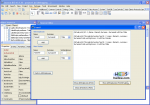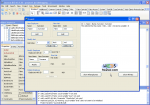
We've finished the previous article on inheritance talking about the way used in FreePascal (and in Delphi too) to make a class abstract; we've learned that by declaring just one method as virtual abstract is enough to get the result.
But again we've seen that is not true, indeed.
Theory says one thing, and reality another one! This is a rule you should always keep in mind, because reality always doesn't care of your thoughts. 😉
Back to our example... is there a way to get a true abstract class? Luckily yes!
Ladies and Gentlemen, here the interfaces!



